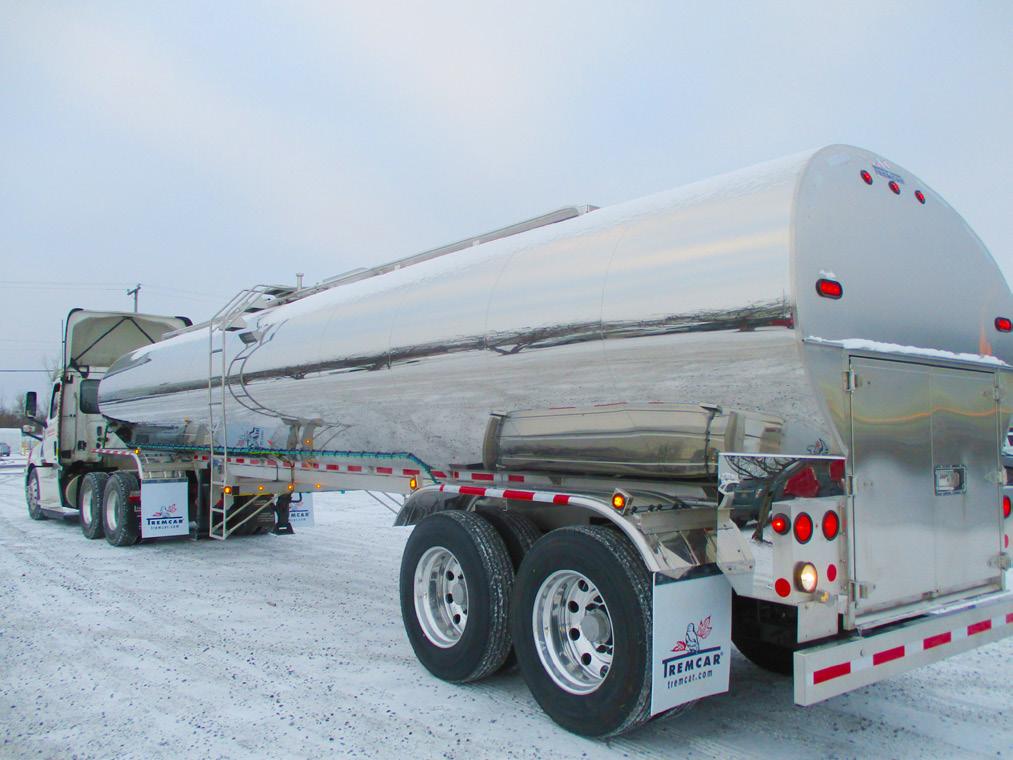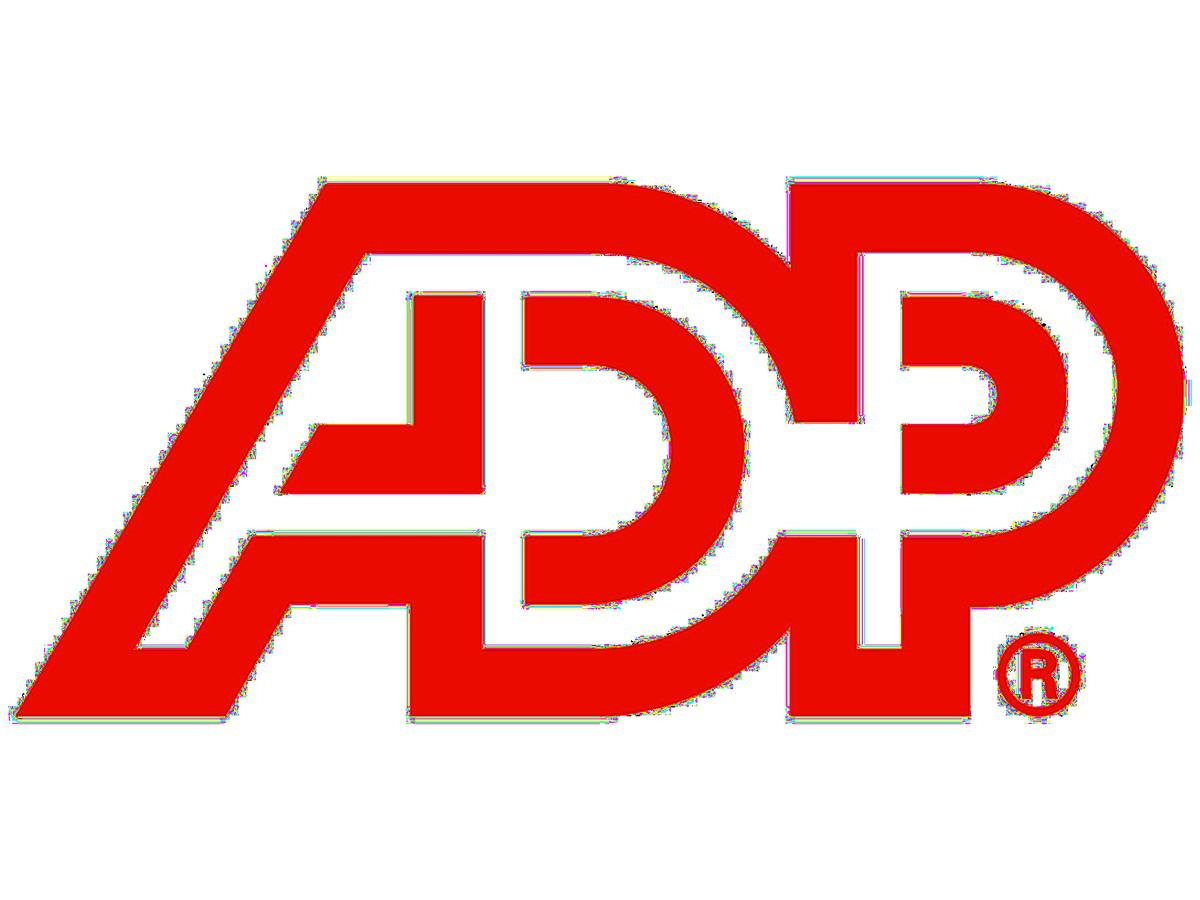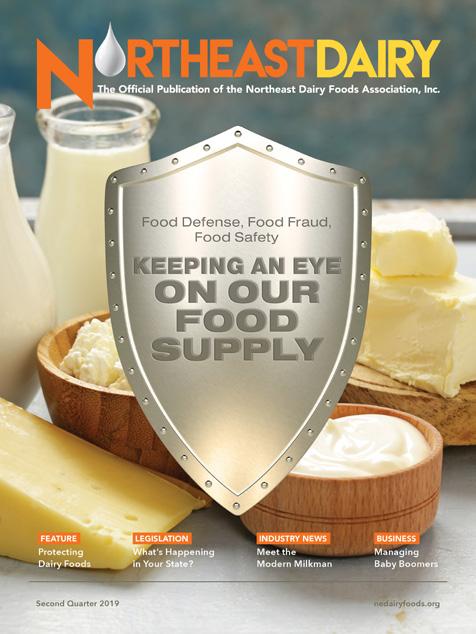
23 minute read
Be The Next NDFA Customer Of The Year
And you already thought ice cream was delicious! New York State lawmakers are considering allowing hard liquor to be added to ice cream, part of a list that already includes beer, hard cider and wine. If the bill passes, it would limit the alcohol content to less than 5% — the same as existing “boozy” ice cream flavors, and consumers would still need to be 21 to purchase it. Gilligan’s Island from Sherburne, New York, lobbied for the change in the law following its lead into beer ice cream, which was made legal in 2018. Alcohol was first introduced to ice cream in 2008 thanks to a lobbying effort led by NDFA member Mercer’s Ice Cream of Boonville, New York. Mercer’s is widely known for its wineflavored ice creams like Chocolate Cabarnet and Peach Wine Zinfandel.
Last year, Haagen-Dazs introduced a new line of alcohol-infused ice creams in states where hard liquor ingredients are legal. The Haagen-Dazs line has only about half of the alcohol content that is allowed in New York state.
Advertisement
Boozy ice cream has developed a following at some scoop shops, particularly in New York City, as well as wineries and breweries. NYS MOVES TO MAKE ALCOHOL-INFUSED ICE CREAM LEGAL
(amazing)
Source: PPAI 2017 Consumer StudySource: PPAI 2017 Consumer Study

THE NEED FOR SUCCESSION PLANNING Don’t Let a Triggering Event Take Down Your Family Business
Forty years ago, your father and mother started a family business. They worked hard, and the business grew. Maybe as a child, you helped behind the counter or, as a teen, started to learn some of the skills required on the production end of the business. Your three siblings did the same. At some point, however, you and your siblings each had to decide whether to make the family business a career. Maybe your parents influenced you, pressuring you to stay with the business or conversely deciding that you needed to go to college and/or work in the outside world first to gain some experience. As the years went on, some of the siblings took on roles with the business and others did not. Now, mom and dad are ready to retire but will still depend on the income from the business and want it to continue to be family-owned and operated. So, what happens now? The answer is not an easy one, and the details for each family situation certainly differ, but the need for preparation is the same, according to Daniel G. Van Der Vliet, executive director, Smith Family Business Initiative at Cornell University.
“Succession planning should be viewed as a process, not an outcome, and, as such, an opportunity to craft a desired pathway forward for all interested parties,” said Van Der Vliet, who noted that families should not wait until there is a disruption — death, divorce, retirement, the possibility of a sale or acquisition, etc. — before discussing the future and putting a plan in place.
A particular challenge to succession planning is the separation of family, business, and ownership — what we commonly refer to as the three-circle model of family business,” he explained. “Often, in smaller businesses, people BY CAROLINE K. REFF
wear multiple hats simultaneously, and, as such, fail to see the differences between family and business decisions and outcomes.”
Many don’t see the need for a formalized plan, but it is particularly important for a family-run business to have one, as there are so many factors, and emotions can run high in a crisis or transition. What if parents start a business and gift each of the children a share of the company, yet only a few of the children actually work for the business? What if a parent dies or steps away from the business? What about spouses? Does he or she retain a piece of the company if the couple divorces?
In many cases, small family businesses tend to have a harder time discussing these unknowns, no less formalizing some kind of written agreement. “Families are great at unwritten rules, informality and going with the flow,” said Van Der Vliet. “In a family business, very little gets delegated, and plans are not always spelled out but instead tend to be assumed.”
“The most important factor is going through the process,” said Van Der Vliet. He explained that 50% of business failures are precipitated by an owner’s death. That is why meaningful discussions and more formalized succession planning are vital to the continuation of a family business.
Van Der Vliet encourages family businesses to treat family members like any company would treat its employees. In any other type of working environment, an employee would have some sort of contract, an expectation of employment, education requirements, a negotiated salary, etc. However, in the case of family businesses, “a lot of that goes out the door,” he said. “Often, family business owners think, ‘Why would I need that? I know my son or daughter. I don’t need to have these discussions or have anything in writing. They’ll know what to do.’”
Putting together a succession plan “removes the emotion from the decision,” said Van Der Vliet, who noted that this kind of agreement can range from formal legal documents to something written down in a notebook. He suggests some type of “family constitution” or protocol that outlines a set of rules to follow in regard to each person’s role or ownership in the business. Another good option is a buy/sell agreement, which outlines ownership or the transfer of ownership both in and outside of the family, should a disruption occur.
“Essentially, what we’re talking about here is called ‘governance,’ and that word has a tendency to scare families,” said Van Der Vliet. “Still, it’s just a formal word for a discussion and possible documentation to clearly outline the primary (continued on next page)

owners of the business, the company’s long- and short-term goals, the qualifications that members of the next generation need to join the business, and the expectations regarding input and profits for those working in the business versus those who are not part of the day-to-day operations. Putting this kind of work into the business before a triggering event can take some of the emotions and/or sense of entitlement off the table and help everyone understand the expectations and goals needed to keep the family business going strong.” According to Van Der Vliet, having a board of directors, or at least a board of advisors, made up of primary shareholders and owners, as well as a few non-family members, can be advantageous to succession planning and good governance. Having people outside of the family participate on a board is usually beneficial, as their primary interest is in making solid business decisions and offering objective ideas and observations that are separate from the emotions that can run deep in even the closest of families. From the corner store to a national brand, family businesses span the economic spectrum, but, regardless of the size, “matters of family are fairly universal no matter how many zeros are added to the bottom line,” Van Der Vliet said. “Addressing the difficult, yet necessary, decisions up front will help make things easier later on.”
WHERE TO START?
Are you thinking of putting together a succession plan for your family business but aren’t quite sure how to get started? The Smith Family Business Initiative at Cornell University in Ithaca, New York, has a variety of educational and networking tools, as well as resource referrals for family business owners, successors and students. For more information, go to:https://www.business.cornell.edu/familybusiness. This site also offers a directory of university-based family business programs across the globe through the Family Business Alliance.
Concerned about increased operational costs?

DOPKINS CAN HELP. Our Client Accounting & Advisory Solution (CAAS) team can help you drive business results by turning operational functions from cost centers into profit centers.
Our tailor-made solutions include: Virtual Accounting Department CFO, Controller or Accounting Staff Level Services Business Process Outsourcing
Learn more at www.dopkins.com/CAAS >

We Innovate for the Milk Transport Industry. Multi-axle, Custom Built Tanks for Your Needs TREMCAR

Tremcar.com | 800-363-2158
L e t u s b e yo u r full-service marketing agency
Northeast Dairy Media has partnered with LocaliQ, part of the USATODAY Network, and now offers a full suite of digital solutions. This partnership allows us to have a digital arm that combines local, regional and national insights from more than 1.5 million campaigns delivering over 285 million leads. Combining the power of Northeast Dairy Media print products and LocaliQ digital solutions allows us to further reach your targeted audience and continue to propel success for all aspects of your campaigns.
WHY USE US?
1. We are a trusted partner of NDFA and NDSA. 2. We understand the dairy processing industry. 3. We have a full range of digital marketing services and can help build the most optimum package for your business and budget.
4. We have a partnership with the USAToday Network that ensures we reach the most sizeable and diverse audience possible.
Contact us today to get a free digital audit of your business website with recommendations: 5. We have a vested interest in your success.
WEBSITE DEVELOPMENT Site designed for your industry and customer needs. Clear calls-to-action drive form fills, calls, emails and chat. Built for mobile devices first, then desktop, for the best responsive experience.

BRANDED CONTENT We help you connect with your audience in unique ways that drive engagement and grow your business. Seventy percent of consumers prefer learning about products through content.
SEARCH ENGINE OPTIMIZATION Show up organically when your customers search for businesses like yours. Be seen as the trusted local authority, set apart from your competitors, and bring your story to life with the metrics that matter most.
SEARCH MARKETING Our proprietary technology optimizes based on conversions (not clicks). Our sponsorship with USAToday Network ensures your campaign reaches where 98% consumers search with transparent results.
LISTINGS MANAGEMENT Inaccurate business directory listings lead to missed opportunities. Getting your business listed across the internet is the best way to be found, attract new customers and increase revenue. No matter what you offer, potential customers are looking for it online. Are they finding you?
GEO-FENCING Powerful, efficient and accurate way to target specific businesses and get a leg up on your competition with mobile advertising.
KEYWORD TRACKING One of the major benefits to a properly executed local campaign is a sharp increase in your local keyword ranking. Your directory listings should be optimized for critical keywords that your potential customers are using in their searches. Use our proprietary Client Center hub to measure your performance.
REVIEWS Manage your online reputation and make sure you look good in your customers’ eyes. Use our proprietary Client Center hub to monitor reviews, respond to them in real time and stay on top of your online reputation.
SOCIAL MEDIA STRATEGY/SET UP We help set up your social media presence and can help more people discover your business, engage with you and choose you through an organic and paid social media advertising strategy.
SOCIAL ADS Our smart optimization technology uses artificial intelligence (AI) to maximize leads (form fills, phone calls, website conversions) using machine learning to deliver the best results.
LEAD MANAGEMENT Use our Client Center for easy review of campaign performance within a single dashboard. View leads via email or mobile. Play back phone calls and respond immediately to leads.
NED Magazine | First Quarter 2020 • 53 RETARGETING Maximize your marketing by getting web visitors to return to your site over and over. Retargeted viewers are 70% more likely to convert than the average online user.
2020 STATE TAX WITHHOLDING CHANGES MAY WARRANT ATTENTION

The IRS recently released the final version of the 2020 Form W-4, Employee’s Withholding Certificate. The form contains major changes, including several new input elements for federal income tax withholding calculations. (For more information, visit https://www.irs.gov.)
In most states, employers are also required to withhold state taxes, as well as federal income taxes from employees’ wages. Many states require employees to complete a state withholding certificate or the IRS Form W-4 for state purposes. With the major changes to the IRS Form W-4, most states have updated their requirements along with withholding certificates. Since federal allowances were removed from the redesigned federal Form W-4, the form cannot be used in certain states. Prior to 2020, Massachusetts, New Jersey, New York, Rhode Island and Vermont were NDFA and NDSA member states that accepted the federal Form W-4 as an alternative to the state withholding certificate. Pennsylvania did not use a withholding certificate. It required employers to calculate the state tax to be withheld from an employee’s wages using a flat percentage rate, currently 3.07%.
With all of these changes, employers will need to carefully review each of the state requirements. Certain states revised their state withholding certificates for wages paid after 2019. Like the IRS, states will generally not require existing employees to complete new withholding certificates. Rather, the new withholding certificates will apply to newly hired employees and existing employees who wish to adjust their withholdings. Additionally, states may have specific work requirements for employers to follow when an employee does not complete a state withholding certificate.
Make sure that you’re using the correct state withholding certificate and following the applicable state requirements. You can locate the state tax information via the IRS website at https://www.irs.gov/tax-profesionals/government-sites. Within the NDFA and NDSA membership, the state of New Hampshire does not impose a state income tax on wages. As of Jan. 1, 2020, Pennsylvania uses a flat percentage rate for withholding (no withholding certificate). Connecticut, Maine, Massachusetts, New Jersey, New York, Rhode Island and Vermont have their own withholding certificates. EMPLOYERS SHOULD ALREADY BE PREPARED FOR 2020 CHANGES Payroll departments, human resources and others involved in the hiring process will need to be aware and monitor ongoing changes in light of the significant IRS and related state income tax withholding requirements. It may be necessary to adjust certain hiring and/or onboarding procedures. For example, it may be helpful to offer new employees additional time and a private room to complete the Form W-4 and/or state withholding certificate or permit new employees to take the forms home for completion. WHAT CAN ADP DO FOR YOU?
ADP is one of the NDFA and NDSA’s endorsed service members that offers expert advice and prices specifically designed for our members. ADP maintains a staff of dedicated professionals who carefully monitor federal and state legislative and regulatory measures affecting employment-related human resource, payroll, tax and benefits administration and help ensure that ADP systems are updated as relevant laws evolve. For the latest on how federal and state tax law changes may impact your business, visit the ADP “Eye on Washington” web page at www.adp.com/regulatorynews.
Gina Vono is a sales executive with ADP. Reach her at 315-591-6139 or gina.vono@adp.com for more information on how ADP’s endorsed member services can assist your business. BY GINA VONO
According to the Associated Press, cheese was one of the items rocketed to the International Space Station in February to satisfy the cravings of the astronauts working there. The capsule held a variety of equipment, as well as snacks requested by the two American and one Russian astronauts,which included cheddar and manchego cheeses. CHEESE LAUNCHES INTO SPACE



WHAT CHEESE CAN YOU FREEZE?
Some cheeses freeze beautifully, but others — well, not so much. Here are some cheeses you can freeze: • Cheddar • Gouda • Swiss • Havarti • Parmesan • Feta • Mozzarella Try to use the frozen cheese within six months for best results. And, here are those you shouldn’t freeze: • Brie • Camembert • Stilton • Cream cheese • Low fat versions of most cheeses



OSHA UPDATES
Dairy Processing Safety: Emergency Action Plans Required

BY JASON WOODRUFF, CIH CSP
The Federal Occupational Safety and Health Administration requires all facilities to have an emergency action plan, which also usually includes a fire prevention plan. The regulatory requirements for these are found in 29 CFR 1910.38 and 29 CFR 1910.39.
EMERGENCY ACTION PLANS
An emergency action plan needs to cover at least the following: 1. Procedures for reporting a fire or other emergency 2. Procedures for emergency evacuation, including type of evacuation and exit route assignments 3. Procedures to be followed by employees who remain to operate critical plant operations before they evacuate 4. Procedures to account for all employees after evacuation 5. Procedures to be followed by employees performing rescue or medical duties 6. The name or job title of every employee who may be contacted by employees who need more information about the plan or an explanation of their duties under the plan. These topics must be included in the written program of the emergency action plan. Implementation of these topics is critical to effectively managing emergencies at your facility.
As a part of your emergency action plan, your employees should conduct routine inspections of emergency exits, fire extinguishers, emergency lighting, muster points and equipment (flashlights, defibrillators, windsocks, etc.) to ensure their operability and accessibility.
An emergency evacuation drill should be conducted for each shift of operation, including exit due to fire, medical emergency and ammonia (if applicable) evacuation. Alarm sounds for each of these types of emergencies should be recorded, so that they can be played for training purposes, and all personnel can discern between different types of alarms. All personnel should
be involved in an after action review of any emergency drill to identify any deficiencies (locations with no lighting, alarm sounds, etc.) to improve the emergency response actions.
Your facility may need to identify critical operations. These could include continued operation of an ammonia refrigeration system and the ancillary systems associated with the ammonia refrigeration. Where possible, the control systems can be potentially automated or remotely controlled, as this will assist with maintaining these operations in order to prevent catastrophic circumstances. It is a good idea to ensure you have accurate standard operating procedures for shutdown, emergency shutdown and restarting of your critical operations.
FIRE PREVENTION PLAN
Your fire prevention plan typically should be nested within your emergency response plan. It may be a good idea to develop one emergency response map and include with it locations of emergency response equipment, as well as fire
prevention related information. The fire prevention plan should include, at a minimum: 1. A list of all major fire hazards, proper handling and storage procedures for hazardous materials, potential ignition sources and their control and the type of fire protection equipment necessary to control each major hazard 2. Procedures to control accumulations of flammable and combustible waste material 3. Procedures for regular maintenance of safeguards installed on heat-producing equipment to prevent the accidental ignition of combustible materials 4. The names or job titles of employees responsible for maintaining equipment to prevent or control sources of ignition or fires
5. The names or job titles of employees responsible for the control of fuel source hazards. Practicing your emergency response and fire prevention plan with employees, as well as local emergency response personnel, will assist you in identifying shortfalls/ resource deficiencies and logistics difficulties. In an emergency, your team will unfortunately default to its lowest level of competent training. As part of your overall business continuity plan, you want this competent training to turn what could have been a catastrophic event into a minor hiccup.


Jason Woodruff, CIH CSP, is a senior consultant with Partners Environmental Consulting in Syracuse, New York.

Read the previous issues of Northeast Dairy Magazine online.

Visit issuu.com/nedmagazine




Congress, the Food and Drug Administration and the Federal Motor Carrier Safety Administration have all been active in considering the regulation of products containing cannabidiol, commonly referred to as CBD. Drivers of commercial motor vehicles and their employers should not assume that these products are legal, safe or harmless, however.
In the 2018 Farm Bill, Congress removed hemp (defined as cannabis with less than 0.3% THC) from the list of Schedule I controlled substances and made it an ordinary agricultural commodity. The recently passed 2020 Agriculture Appropriations Bill gave the FDA $2 million for research, policy evaluation, market surveillance and issuance of an enforcement discretion policy relating to products containing CBD. But the FDA has not yet established any regulations for the safe use of products containing CBD.
The FDA has a listing of resources on its website, www.fda.gov, regarding the use and regulation of CBD. But even though possession and use of CBD oil are legal under the laws of almost every state, and it is used by many persons to treat a variety of conditions, including anxiety, depression, nausea, pain, sleep disorders and even acne, to date, the FDA has approved only one CBD product, a prescription drug product to treat two rare, severe forms of epilepsy. It is currently illegal to market CBD by adding it to a food or labeling it as a dietary supplement. The FDA has also released a great deal of consumer information on its website on the effects of and concerns relating to use of products containing CBD.
In November 2019, the FDA issued warning letters to 15 companies for illegally selling products containing CBD in ways that violate the Federal Food, Drug, and Cosmetic Act. The agency also published a revised consumer update detailing safety concerns about CBD products more broadly. Based on the lack of scientific information supporting the safety of CBD in food, the FDA has asserted that it cannot conclude that CBD is generally recognized as safe among qualified experts for its use in human or animal food.
The FDA website states: “The revised consumer update outlines specific safety concerns related to CBD products, including potential liver injury, interactions with other drugs, DRIVERS AND EMPLOYEES SHOULD BE WARY OF CBD PRODUCTS BY RICK SCHWEITZER
drowsiness, diarrhea and changes in mood. In addition, studies in animals have shown that CBD can interfere with the development and function of testes and sperm, decrease testosterone levels and impair sexual behavior in males. Questions also remain about cumulative use of CBD and about CBD’s impacts on vulnerable populations, such as children and pregnant or breastfeeding women.”
Additionally, the FMCSA still requires drug testing of commercial motor vehicle drivers for marijuana and its main hallucinogenic component, THC. A driver who has used a product containing CBD runs the risk of a positive test for marijuana. Because of lack of quality control in production, a person using products containing CBD cannot be certain of the concentration of THC in the product.
Thus, one truck driver recently filed a class action lawsuit in federal court in Illinois against a manufacturer of CBD oil, claiming that the product caused the driver to fail a DOT drug test. The complaint alleges that the defendant advertised its products as containing no THC, the main psychoactive chemical in marijuana. The plaintiff ate some “Just CBD” watermelon gummy rings and later tested positive on a DOT drug test and was terminated. He filed suit under the Illinois Consumer Fraud and Deceptive Trade Practices Act on behalf of himself and all other persons similarly situated. In addition, the Vermont Department of Motor Vehicles recently placed a driver out of service for 24 hours because he had a bottle of CBD oil in his vehicle. Your company drivers may face similar risks if they use these products. The FMCSA has said that it will be issuing guidance to motor carriers and drivers on the legal implications of using products containing CBD, but that document is still in the works.
Rick Schweitzer is president of Richard P. Schweitzer, PLLC, in Washington, DC. This article originally appeared in Welding & Gasses Today, which is also published by All Times Media.

YOUR CHEESE IS ONE OF A KIND... SHOULDN’T YOUR WASTEWATER SOLUTION BE?
Innovative Wastewater Solutions FOCUSED ON YOUR UNIQUE NEEDS Innovative Wastewater Solutions FOCUSED ON YOUR UNIQUE NEEDS
ENGINEER DESIGN BUILD OPERATE CONSULT


Technology-Driven Wastewater Solutions. Your Partner. Today and Tomorrow. Technology-Driven Wastewater Solutions. Your Partner. Today and Tomorrow.
ADVERTISERS INDEX Ace Sanitary .........................................................................................................................................................................55 Afgritech ................................................. 26 Agri-Mark Cooperative......................................................................................................................................................... 11 Dopkins & Company ............................................................................................................................................................52 Evergreen Packaging ...........................................................................................................................................................38 Farm Credit East ................................................. 23 Gelpac, Rouville Packaging ................................................. 32 H.S. Crocker.........................................................................................................................................................................57 Herbein & Company, Inc ................................................. 41 Integrity Cost Consulting ....................................................................................................................................................... 7 Krohne, Inc ................................................. 4 Marathon Energy .................................................................................................................................................................BC Nelson-Jameson, Inc ................................................. 60 Northeast Dairy Media ............................................................................................................................................25, 46, 53 Schenck Process .................................................................................................................................................................. 31 The Probst Group ................................................. 59 Tremcar USA Inc ...................................................................................................................................................................52 Tri Tank Corp ................................................. 26 WestRock ............................................................................................................................................................................ IFC
GIVE US SOMETHING TO CHEW ON. Are you introducing an interesting product? Have you instituted cuttingedge processes? Are you welcoming a new hire? Is your business expanding, moving or changing? Do you have other news to share?
Northeast Dairy magazine is always looking for Member and Industry News.
Email your information, news releases and/or captioned photographs to us at editor@ nedairymedia.com.
Your safe, quality food is our business.
Enriching our future while maintaining the values and service we have been bringing to the cheese, dairy, and food industries since 1947.
Growing in 2020: Expanded Team Building on our product and market expertise. Improved Resources Robust website with easy to use search capabilities. New Location Updated corporate office with room to grow.

Benefits of Association Membership
EXECUTIVE DIRECTOR AND INDUSTRY CONSULTANT SUPPORT
Legislative Representation Through Executive Lobbying and Networking
Safety and Environmental Information
Economic Analysis and Forecasting
Continuing Education and Certification Opportunities
Industry Spokesperson
Emergency Preparedness
PROFESSIONAL COST-SAVING PROGRAMS
Dedicated Industry-Specialized Insurance Programs
Employee Benefits, Including 401(k) Retirement Program
Energy Supply and Consulting Services
NETWORKING AND MEETING EVENTS
Annual Northeast Dairy Convention
Contact Booth at the Annual Convention
Annual Dairy Industry Clambake
Hospitality and Sponsorship Opportunities

Industry Plant Tours
Annual Charity Golf Outing Fundraiser
COMMUNICATIONS AND PUBLIC RELATIONS
Quarterly copy of Northeast Dairy Magazine
Direct Customer Advertising Opportunities
Industry Scholarship Program
Membership Directory with Key Contacts in the Dairy Industry
Digital Buyers Guide (launching in 2019)
NDFA NDSA
ADVOCACY
An association represents your interests before your government leaders, industry and business community. If your business/industry faces major threats or needs support, our association is right there on the front line fighting for you.
NETWORKING
Association events, meetings and member directories make networking a reality for you and your peers. This is the one advantage many view as the most important reason to join!

Heating Oil Natural Gas Electricity Propane Gas & Diesel








